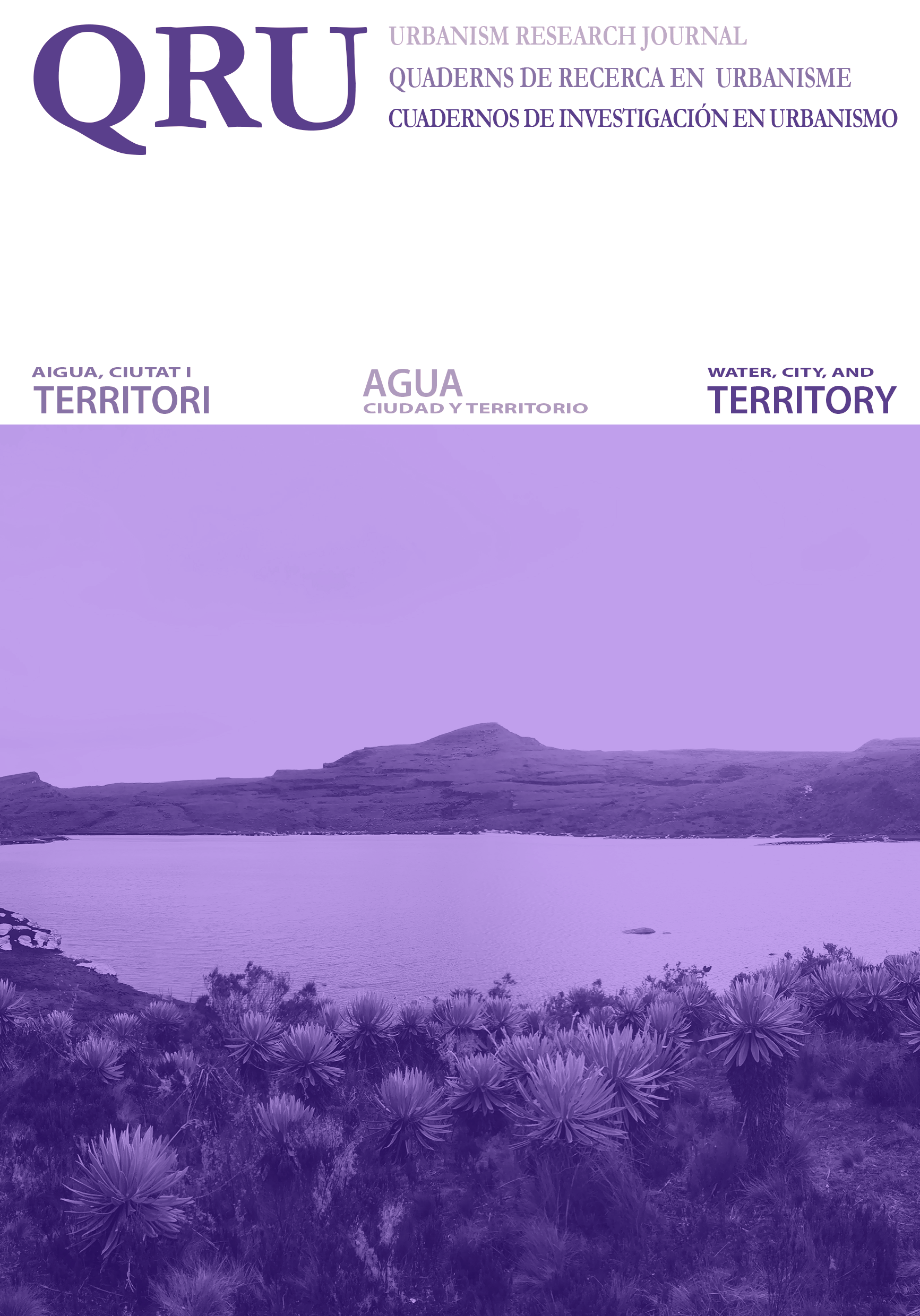The Jordan River as the spatial axis of the city of Tunja
The university walkway.
DOI:
https://doi.org/10.5821/qru.11910Abstract
Studies have shown that in urban areas, rivers are axes of connection to the territory as a potential for sustainable development. Currently, when growth is fragmented and without a defined structure, the urban design of cities does not adequately link the ecosystemic processes between rivers and their built environment. This article proposes, from a design perspective, three urban design proposals for the Jordan River. The river is located northeast of Tunja, Colombia. The proposals are evaluated as river scenarios, and through qualitative and quantitative characteristics, a final proposal is given hierarchy to the river in relation to the context, taking into account the compactness indexes. It is concluded that the best proposal has an average absolute compactness of 1.4 and an average corrected compactness of 6, showing the importance of increasing height and built area in areas close to the river.
Downloads
Published
Issue
Section
License
Those authors who have publications with this journal, accept the following terms:
a. Authors will retain their copyright and guarantee the journal the right of first publication of their work, which will be simultaneously subject to the Creative Commons CC BY-NC-ND-4.0 recognition license that allows third parties to share the work provided that its author and its first publication are indicated in this journal, but they cannot be changed or used commercially.
b. Authors may adopt other non-exclusive license agreements for the distribution of the version of the published work (eg: deposit it in an institutional telematic archive or publish it in a monographic volume) provided that the initial publication in this journal is indicated.
c. Authors are allowed and recommended to disseminate their work through the Internet (e.g. in institutional telematic files or on their website) before and during the submission process, which can lead to interesting exchanges and increase citations. of the published work. (See The effect of open access).













